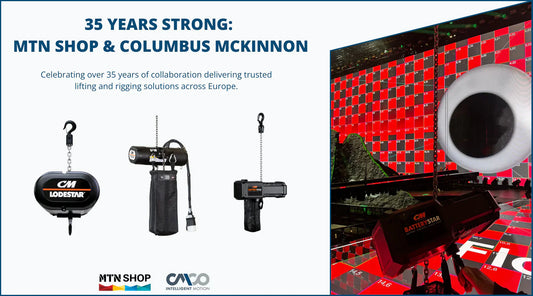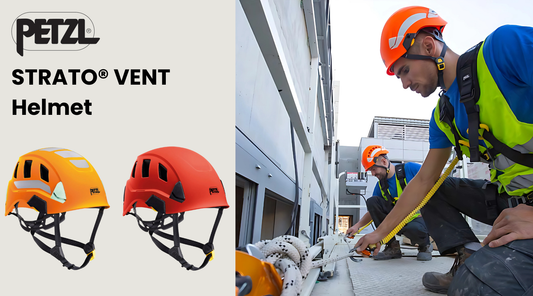Choosing The Right Shackle For The Job
Article
CHOOSING THE RIGHT SHACKLE FOR THE JOB
Shackles are the quiet workhorses of rigging. From quick pick-and-place jobs to long-running installs, the right shackle depends on your connection, angle, and environment. Here’s how we at MTN evaluate the options—and the models we use and recommend every day.
Shackle Essentials (What Matters Most)
In-Line Loading
Shackles are designed and rated for in-line tension. Multiple slings can be attached in the bow if symmetrically loaded and the included angle does not exceed 120°. Attach multiple legs to the bow, not the pin.
Side Loading Reductions
When side-loading with a single sling, reduce WLL in line with ASME/CM guidance (e.g., 30–50% depending on angle). Never side-load round-pin shackles. Always keep loads centered.
Angle Awareness
As angles increase off-axis, the effective capacity drops. Use the manufacturer’s angle charts and keep included angles within spec. For multi-leg connections, keep the total included angle ≤ 120°.
Our Go-To Shackles

CM Screw Pin Shackle
Why MTN uses it daily: Highest WLL of any carbon steel shackle in the industry, forged and heat-treated for strength, abrasion-resistant, and painted black for low visibility on stage. The screw pin makes frequent connects/disconnects fast, then locks by torque for security.
- Sizes: 1/4"–3/4" · WLL: 3/4–6-1/2 ton
- Marked with size & WLL for quick ID; CE marked
- Ultimate strength = 5× WLL · Proof load = 2.2× WLL
 MTN TIP
MTN TIP
For temporary/recurring connections, screw-pin anchor shackles are ideal. For long-term or permanent installations, consider bolt-type shackles. Always verify the angle, pin engagement, and that legs terminate in the bow—not on the pin.

Crosby Screw Pin Anchor Shackle (Galvanized)
Bow shape handles a wider variety of connections. QUIC-CHECK angle indicators are forged into the bow (45° references) to quickly estimate hitch angles and apply side-load reductions. Forged, quenched & tempered with alloy pins, hot-dip galvanized finish (G-209).
- Capacities: 1/3–55 t (Grade 6), fatigue-rated
- Meets ASME B30.26 and RR-C-271G; ABS type approval available
- Temperature range: −40 °C to 204 °C; Charpy options available

Kuzar Shackle SH-8 (3,250 kg)
Reliable 3.25-ton (3,250 kg) anchor shackle for hoists, truss, and general rigging tasks. A dependable option for day-to-day entertainment and industrial use.
Shackle Selection Checklist (by MTN SHOP)
1) Connection & Geometry
How many legs? Connect in the bow, keep included angle ≤ 120°, and ensure the load path stays centered/in-line.
2) Duty & Duration
Frequent connects/disconnects → screw pin. Long-term or critical → consider bolt-type shackles and appropriate locking.
3) Angle & Side Loads
Apply angle reductions for side loads; never side-load round-pin shackles. Verify manufacturer data for WLL adjustments.
CM Screw Pin Shackle — Bulk Savings

Buy more and save more at MTN with any bulk purchase of the CM Screw Pin Shackle 💪
Used by our own crew daily, this shackle has the highest working load limit of any carbon steel shackle in the industry and comes in 8 different sizes.
Frequently Asked Questions
Can I connect multiple sling legs into one shackle?
Is side loading allowed?
Pin types: screw pin vs. bolt-type?
Always follow ASME B30.26 and the shackle manufacturer’s instructions. Practices summarized from the CM Pocket Rigging Guide (e.g., in-line loading, angle/side-load reductions, bow vs. pin connections).



